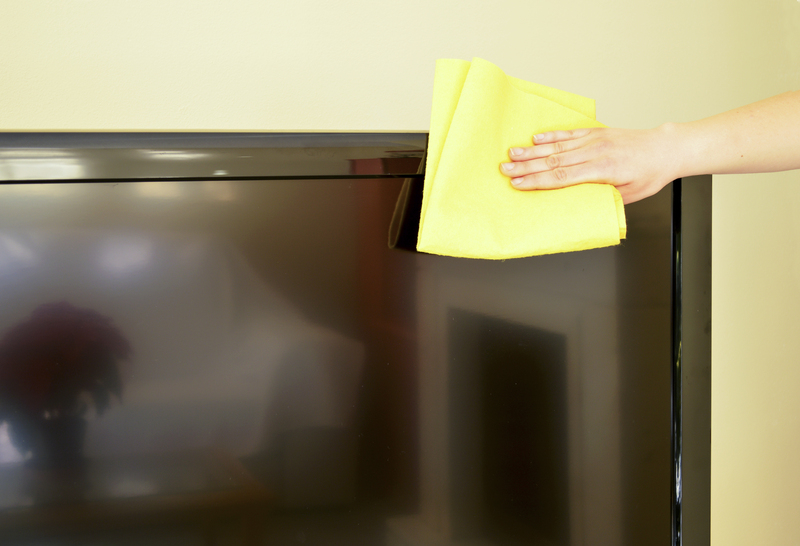Shield Your Jewelry's Beauty with Cleaning Methods
Posted on 05/10/2025
Shield Your Jewelry's Beauty With Cleaning Methods
Jewelry captivates us with its dazzling brilliance, intricate designs, and sentimental value. Whether it's a sparkling diamond ring, a cherished family heirloom, or a beloved pair of earrings, every piece of jewelry deserves dedicated care. Shielding your jewelry's beauty requires more than just careful storage and gentle wear--it calls for consistent, safe, and effective cleaning methods. In this comprehensive guide, you'll discover how the right techniques can protect and rejuvenate your treasures, ensuring they remain as captivating as the day you acquired them.

Why Cleaning Jewelry Is Essential to Maintain Its Brilliance
Without proper cleaning, jewelry accumulates dirt, oils, sweat, and environmental pollutants. These substances dull gemstones, tarnish metals, and can even cause lasting damage. Regular cleaning not only preserves the aesthetic appeal but also helps you spot signs of wear, loose stones, or other issues that require professional attention.
- Restores Luster: Removes buildups that cloud gemstones and metals.
- Prevents Tarnish: Protects metals like silver and gold from oxidation.
- Reduces Risk of Damage: Identifies issues long before they compromise the integrity of your piece.
- Healthier Skin: Eliminates bacteria and allergens clinging to your jewelry that can cause skin irritations.
Understanding Different Materials: The Key to Safe Cleaning
Not all jewelry is created equal. Gold, silver, platinum, diamonds, pearls, and gemstones each require tailored cleaning approaches. Avoiding one-size-fits-all solutions is crucial for preserving your jewelry's brilliance. Let's decode the safest ways to shield your jewelry's beauty according to material.
Essential Home Jewelry Cleaning Methods
1. Gentle Soap and Water Method
A classic, safe, and effective method suitable for most precious metals and hard gemstones (including diamonds, sapphires, and rubies).
- Fill a bowl with warm water and mild dish soap. Avoid hot water, which can damage fragile gemstones.
- Soak jewelry for 15-20 minutes.
- Use a soft-bristled toothbrush to gently scrub away grime, focusing on tricky areas like prongs and engravings.
- Rinse thoroughly and pat dry with a lint-free cloth.
Tip: Avoid this method for pearls, opals, and other porous gemstones.
2. Baking Soda Paste for Silver Jewelry
Silver earrings, bracelets, and rings often tarnish. Baking soda is a gentle abrasive that refreshes silver's radiance.
- Make a paste with three parts baking soda and one part water.
- Apply the paste gently with a soft cloth, avoiding circular motions to prevent scratching.
- Rinse, then buff dry for an eye-catching shine.
3. Vinegar Soak for Sterling Silver
*Vinegar is an excellent natural cleaner for heavily tarnished sterling silver jewelry.*
- Soak your silver pieces in a solution of half-cup white vinegar plus two tablespoons of baking soda for two to three hours.
- Rinse and dry thoroughly.
Note: Not safe for jewelry with pearls or gemstones.
4. Ammonia Solution for Diamonds
Ammonia is particularly effective for reviving diamonds, restoring exceptional sparkle and removing stubborn grime.
- Mix one part ammonia to six parts water in a bowl.
- Briefly soak the jewelry (no more than one minute).
- Use a soft brush to clean gently, then rinse and dry immediately.
Warning: Never use ammonia on gold, pearls, or gemstones other than diamonds.
Special Considerations: Cleaning Delicate and Vintage Jewelry
Cleaning Pearls and Soft Gemstones
Pearls, opals, turquoise, and other soft or porous stones require exceptional care. Never soak these materials or use harsh chemicals.
- Wipe gently after each wear with a soft, damp, lint-free cloth.
- Avoid submerging in water. If deeper cleaning is needed, use a cloth barely moistened with water and a drop of mild soap.
- Lay flat to dry to prevent stretching or damaging the silk thread of pearl necklaces.
Pro Tip: Store pearls in a separate fabric pouch--never in plastic.
Antique or Heirloom Pieces
For jewelry with historic, sentimental, or high monetary value, it's best to leave cleaning to professional jewelers. Home cleaning attempts can inadvertently cause irreparable damage to these treasures.
- Schedule periodic inspections and cleaning with an experienced jeweler specializing in vintage pieces.
- If you must clean, stick to a soft, dry, natural fiber cloth and never use liquids or ultrasonic machines on antiques.
Shielding Your Jewelry's Beauty: Using Professional Cleaning Services
Routine home cleaning keeps jewelry immaculate for daily wear, but several scenarios demand professional intervention:
- Extensive tarnish or grime that doesn't yield to home methods.
- Complex pieces with intricate or delicate designs.
- Loose gemstones or signs of damaged settings.
- Valuable antique or heirloom jewelry.
Jewelers use advanced cleaning techniques--such as ultrasonic baths, steam cleaning, and professional-grade polishing--that maximize cleanliness while minimizing risk. Get your jewelry professionally cleaned and inspected at least once a year or before major milestones.
How to Maintain and Shield Your Jewelry's Beauty Between Cleanings
- Remove jewelry before active tasks. Gardening, exercising, or swimming exposes your pieces to dirt, chlorine, salt, and risk of loss.
- No direct contact with beauty products. Lotions, perfumes, and hairspray can rapidly dull metals and gems.
- Clean gently and regularly. Wiping down jewelry after each wear reduces buildup, lengthening the time between deep cleanings.
- Store with care. Use soft pouches or dedicated jewelry boxes. Keep pieces separated to prevent scratches.
DIY Jewelry Cleaning Mistakes to Avoid
Even with the right intentions, poor cleaning habits can compromise your jewelry's integrity. To truly protect your jewelry's beauty:
- Avoid abrasive materials, including toothpaste, baking soda on soft stones, and rough cloths.
- Do not use harsh chemicals like bleach, acetone, or chlorine.
- Shun ultrasonic cleaners for soft or porous gems, pearls, and vintage or glued jewelry.
- Never soak jewelry with multiple types of stones or fragile settings.
Ultrasonic and Steam Cleaners: When Should You Use Them?
Modern cleaning appliances like ultrasonic and steam cleaners are effective for hard stones and metals, but misuse can lead to disaster.
- Safe for: Plain gold, platinum, and non-treated diamonds, rubies, and sapphires.
- Dangerous for: Emeralds, opals, pearls, turquoise, and all glued or enameled jewelry.
Always consult your jeweler before putting valuable jewelry in these machines.
Eco-Friendly Ways to Protect Your Jewelry's Shine
If you're keen on going green, several natural cleaning solutions shield your jewelry's beauty without sacrificing safety or shine.
- Soap nuts or castile soap: Effective on metals and hard stones.
- Lemon juice mixed with olive oil: Great for gold jewelry when applied with a soft cloth.
- Banana peel: Rubbing the inside of a banana peel on gold or silver can remove tarnish--follow up with a gentle buff.
Storing Your Jewelry to Prolong Its Beauty
Best Practices for Jewelry Storage
- Use lined jewelry boxes or individual pouches to prevent scratches and exposure to air.
- Keep away from direct sunlight: Some stones fade or become brittle with prolonged exposure.
- Group metals separately: Silver, gold, and platinum pieces should not touch to avoid chemical reactions.
- Use anti-tarnish strips in your storage boxes to protect silver.
The better you store your jewelry, the less cleaning it will need!

Frequently Asked Questions about Jewelry Cleaning and Protection
-
How often should I clean my jewelry?
Regular wear jewelry should be cleaned every 1-2 weeks, and deep cleaned monthly. -
Is it safe to use toothpaste on silver jewelry?
No. Toothpaste is too abrasive for silver and will scratch both metal and stones. -
Can I clean my gold jewelry with baking soda?
Gold doesn't tarnish easily, so opt for mild soap and water. Baking soda can scratch pure gold or soft gems. -
Do I need to remove jewelry before sleeping?
Yes. Removing jewelry before bed minimizes prolonged exposure to body oils, sweat, and accidental damage.
Conclusion: Shield Your Jewelry's Beauty for Generations
By adopting the right cleaning methods for jewelry and maintaining regular care, you'll ensure your pieces stay immaculate, sentimental, and stunning for years to come. From understanding the needs of different materials to storing your gems properly, every thoughtful step you take will shield your jewelry's beauty and uphold its brilliance for generations. Remember: When in doubt, consult a professional--and treasure the art of care as much as you cherish the jewelry itself.
Ready to safeguard your favorite jewelry? Start today with these expert cleaning strategies and see the transformation for yourself!




